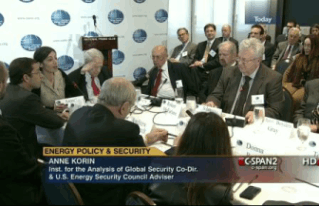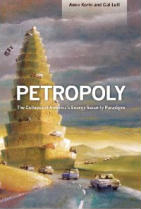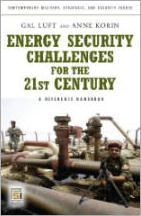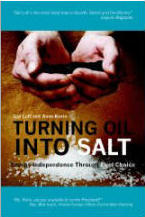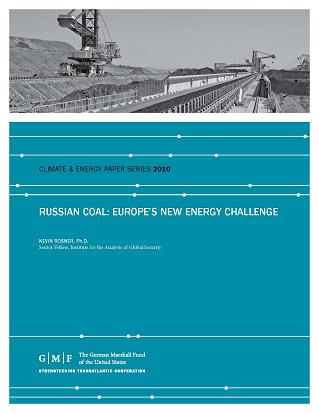Russia’s efforts to create within the Gas Exporting Countries Forum (GECF) a more focused "Big Gas Troika" composed of Iran, Qatar, and Russia have been identified as a serious threat to European, and global energy security. Following an October 21st, 2008 meeting in Tehran between representatives of the three countries, a Gazprom press release suggested this producer’s group (also referred to as a "Gas G3") could be expanded, and include other GECF countries in what Alexei Miller calls an "Energy Pole." Parallels with OPEC, which at its inception also functioned as a consultative body, are clear; the proposed organization bears the hallmarks of a nascent cartel – an Organization of Gas Exporting Countries (OGEC), with Russia in the driver’s seat. In the short term, prospects of such a cartel have remained a marginal concern for EU Energy Commissioner Andris Pielbags, who finds Norway’s categorical opposition to membership in such an organization reassuring. A recent IEA report, however, suggests such a cartel may indeed emerge within ten years, further empowering its members in their dealings with major gas importing countries.
Motivations behind the recent flurry of activity vary. With crude (and thus prices of gas exports linked to it) currently below Russia’s $70 budget break-even point, the Kremlin needs a catalyst to bring prices up again. In this sense the aftermath of the Georgia conflict must have been a disappointment. Despite reports of Russian bombs landing just meters away from the Baku-Tbilisi-Ceyhan oil pipeline, energy prices continued dropping throughout August. Simultaneous saber-rattling rhetoric from Tehran, and suggestions by Revolutionary Guard General Mohammad Ali Jafari of a possible strike on US forces in the Strait of Hormuz, also failed to slow this downward slide. As prices continued to fall into September Russian Deputy Prime Minister Igor Sechin, attending OPEC’s Vienna meeting as an observer, suggested closer cooperation with the oil cartel, and proposed holding a meeting of the group in Moscow. After even this move failed to halt the decline in oil prices, to which most of Russia’s gas supply contracts are linked, a new approach was required.
At prior meetings of the GECF, Russia expressed interest in dividing the gas market into spheres of influence, each dominated by a single producer. Iran, Venezuela, and Bolivia are known to seek an immediate move towards a cartel. These members, however, are the ones most constrained in their production potential, with national oil companies (NOCs) short of capital and expertise, and foreign companies reluctant to sign on. Qatar represents the opposite end of this spectrum – it welcomes investment in its gas sector, and it is experiencing rapid growth in upstream and downstream projects. With its small population and strategic location, it has significant potential for playing the role of swing supplier in the LNG market, and until recently has been loath to consider any limits to export growth.
Despite being publicly supportive of deeper engagement among gas exporters, and having entered into a variety of bilateral agreements, the Kremlin has not been able to achieve what it seeks the most – influence over other producers akin to that of Saudi Arabia in OPEC. It may be a long time before this happens. Though Russia has by far the largest gas reserves in the world, at over 30% (in oil, Saudi Arabia controls 25.3%, Iraq 11.1%), its domestic consumption renders it unable to play the kind of swing producer role the Saudis have enjoyed since OPEC’s foundation. Also unlike OPEC, with its membership, and reserves, largely concentrated in the Middle East, the gas cartel would be geographically and culturally more diverse, and presumably so would its interests.
For Russia and Iran the benefits of an OGEC are clear. Neither country is equipped to take advantage of the far-more lucrative trade in liquefied natural gas (LNG) trade yet. Both are instead relegated to selling gas only to markets directly linked to their pipeline infrastructure; cooperation in LNG development has been named a priority by both countries. Russia has the advantage of holding some of its customers captive through a web of interconnected pipelines, downstream assets, and long-term (oil-price linked) contracts. Iran lacks even these. Instead, short of capital and technology, the National Iranian Gas Company (NIGC) on good days exports insignificant quantities of natural gas to its neighbors Armenia and Turkey along with a tentative agreement to supply the Italian, Austrian, Pakistani, and Indian markets at a future date. During cold winters however, in spite of the fact that Iran is the world’s second-largest gas reserve holder it is forced to import gas from Turkmenistan to satisfy domestic demand.
Russian Overdrive
The general dynamics of the LNG market suggest a cartel may be much more difficult to put together than is feared. Russia, dominant in Europe, may benefit from a short-term respite in competition over European market share, yet with over a quarter of the world's gas reserves it is bound, in due time, to seek a larger presence there and in other regions. Iran currently plays a negligible role on the international gas market, while Qatar, at 9.2% of world’s gas reserves, accounts for less than 2% of international gas production. OGEC would therefore need to be structured in a way that reflects not only current production but also allows for Iran and Qatar to capitalize on their reserve base by ratcheting-up production and market-share over time. Otherwise, any cooperation on price or production levels would at most be a "cessation of competition," quickly recognized by smaller members as an attempt to throttle their revenues and ambitions.
Gazprom may seek such an "armistice" just long enough for the company to build up its capacity and to bring its more challenging fields on stream. Once these investments are in, the long-term scenario suggests high output to be in Russia's best interest, in order to make productive use of its infrastructure and to ensure for itself greater political influence. Investments totaling tens of billions of dollars in projects as diverse as Sakhalin-2 and Shtokman are not being developed to stand idle; Gazprom certainly expects to exercise its diplomatic clout, and to earn a decent return doing it.
Before the formal announcement of the Big Gas Troika, Russia initiated a number of efforts to consolidate the gas market on its own terms. Gazprom actively pursues agreements with national oil and gas companies in order to cooperate on capacity expansion, marketing, and access to export markets. One of its first forays was a March 2006 memorandum of understanding with Sonatrach of Algeria. Sonatrach accounts for 18% of Europe’s gas imports and together with Gazprom account for 80% of Europe’s gas imports. Notable is the way the Gazprom-Kremlin duopoly leverages military and political power in its energy dealings. Besides the gas arrangement, Putin and Algerian President Bouteflika have discussed Algeria’s $4.7 billion Soviet-era debt to Russia and an arms deal. Since then, however, Sonatrach allowed its joint marketing agreement with Gazprom to lapse, and after two months Algiers returned 15 of the fighter planes included in the agreement, claiming quality deficiencies.
The apparent lack of success in Algeria did not dissuade Gazprom from seeking out other partners as a February 2008 agreement between Gazprom Neft (Gazprom’s oil production unit) and the Iranian Oil Ministry suggests. Besides committing to joint exploration and production, the two sides also agreed to "cooperation in the transportation, processing and marketing of gas…," a recurring goal of the Russians in their dealing with other energy producing nations. Gazprom’s discussions with Bolivia’s Yacimientos Petrolíferos Fiscales Bolivianos (YPFB) a month later underscored this strategy. Though the agreement signed on March 18th was limited to Russian participation in exploration activities in the country, in talks with Bolivia’s President Evo Morales mention was made of "prospects for bilateral cooperation in the oil and gas area, as well as issues concerning further joint activities."
April 17 2008 saw the signing of yet another joint venture agreement, this one between Gazprom and the National Oil Corporation of Libya. Entered into during then-President Putin’s visit to Tripoli, it calls on the two companies to build a cross-Sahara pipeline bringing Nigerian gas to Libya. Also on the agenda were talks on Gazprom’s participation in the second stretch of the Green Stream Libya-Italy pipeline. This trans-Mediterranean connector was initially meant to provide Europe with supply diversity, so potential Russian involvement adds to European concerns over energy security.
For Europe, worried about an increasing amount of its gas coming from Russia, such agreements produce fears of a Gazprom "pincer movement," with the Russian monopoly controlling a greater and greater share of gas imported into the EU. With the exception of Bolivia all countries targeted by Gazprom for cooperation in production and marketing are current or potential LNG exporters, as is Egypt, with which Gazprom has held numerous, though thus far unfruitful, meetings. On July 4, 2007, during a visit by Egypt’s First Deputy Minister of Petroleum to Gazprom’s Moscow headquarters, the discussion focused primarily on joint work on exploration, development, and LNG production and deliveries. More recently the energy ministers of both countries met in Cairo on March 19, 2008, to discuss both nuclear-power cooperation and, to no surprise, "cooperation in energy, [particularly] oil and gas."
A Gas Cartel Revisited
Unlike the less than successful attempts at establishing OGEC thus far, recent talks in Qatar appear to be advancing. An agreement seems to have been found, less ambitious than previous efforts yet more serious in tenor, that initially does not include proposals to introduce a system of quotas and production restraints in the OPEC mold. Instead, the "Gas Pole," as Gazprom’s Alexei Miller calls it, would be built around the three pillars of coordinated investment, marketing, and technological development. The three countries have gone as far as discussing the setting up of a financial affairs center in Doha, a technical center in Tehran, and a center to analyze markets in Moscow. Should these efforts bear fruit, and the kernel of a new gas cooperation council emerges, little will be needed for the organization to blossom into a gas OPEC.
With a number of high-profile, high-cost projects in the pipeline, Russia’s main motivation for creating a cartel seems to be to restrict the development of additional export capacity in other states. Iran might be most vulnerable to such pressure. Dependent on Moscow for cover at the United Nations, and bent on continuing its nuclear program, Tehran may be expected to play ball. Its production growth is already constrained by lack of access to technology and capital. An investment freeze, provided it brings about higher prices, should be in its interest.
In the past ten years, furthermore, Iran’s gas production has been earmarked primarily for domestic consumption. Much of its pipeline network is directed at supplying natural gas for re-injection into oil reservoirs to boost production. More recently, Iran has begun to switch its automobile fleet from gasoline to compressed natural gas. Both these moves allow Tehran to maximize revenues from a stream it knows and understands best – oil.
For Gazprom, Iranian cooperation addresses two challenges. First, Gazprom wants the Islamic Republic’s 15% of world gas reserves to continue to remain beyond the EU’s reach (in spite of the Nabucco pipeline promoted as a potential conduit for eventual Iranian exports). Gazprom also wants to limit Iran’s role as a transit corridor for supplies from further afield as would be the case for Turkmen transit gas through Iran also to the EU should Nabucco ultimately be developed.
Qatar is the odd man out in this "Troika." Already deeply vested in LNG, Doha is highly motivated to continue adding capacity. Its North Field, a geological extension of Iran’s South Pars mega-reservoir, is the biggest single gas play in the world. Qatar Gas and its affiliates have ordered dozens of the largest LNG carriers, including 14 record-setting Q-Max class vessels. At $300 million apiece, these Qatar Max (indicating the maximum size of ship able to dock at Qatar’s Ras Laffan terminal) LNG carriers cost on average four times more than oil tankers carrying comparable amounts of energy. Such an outlay represents a significant vote of confidence in Qatar’s ability to expand production and global market share.
Because the North Field straddles the Qatar-Iran maritime border, the emirate has every incentive to maximize production – every BTU shut-in north of the divide translates into additional production to the south. As the richest country in the region on a per capita basis, as a bastion of civil liberties (by Middle-East standards), and as home to the US Central Command Forward Headquarters, Qatar also has little in common with the Islamic Republic. Why shouldn’t Qatar Gas and its partners continue to take advantage of Iran’s inability to develop its gas reserves? Qatar’s significant infrastructure buildup has also resulted in a flotilla of LNG carriers that directly competes with Gazprom, supplying countries such as Italy or the UK with gas during times of peak demand. Qatar Gas cargos have been sent to markets as far away as the US, India, and Japan – all targeted by Iran and Russia for potential future sales.
Conclusion
A close examination of the politics, both domestic and foreign, and the economic structure of the three core nations of a potential OGEC suggests that such a cartel would quickly disintegrate of its own inertia. The cultural, philosophical, or even economic underpinnings required for long-term cooperation simply do not exist among the three countries. What is more, Russia, the self-appointed swing producer and architect of the organization, has neither the kind of reserve capacity that Saudi Arabia wields in OPEC, nor the economic profile of a country oriented primarily towards energy exports. Indeed, its production-export profile is the inverse image of Saudi Arabia’s: while Saudi Arabia exports over 77% of its production, Russia consumes 72% of its production.
Only with extra supplies freed up through switching from gas-to-coal in electricity generation, planned higher domestic prices to discourage consumption (seen as political suicide should the Kremlin go through with the plan), and the possible ring-fencing of Central Asian gas exports, would Gazprom’s role in international gas trade be able to match Saudi Arabia’s 20% share of cross-border oil shipments. Such a "perfect storm," however, would require an about-turn in Russian consumption, which has been growing in synch with the economy, and the compliance of Turkmenistan in channeling its gas exports through the Gazprom network – both less-than-likely scenarios.
Russia, a self-described energy superpower, sees gas exports as primarily a political asset rather than an economic one – despite exporting more natural gas than oil, most of Russia’s rents are extracted from the oil sector. Gazprom therefore plays a lead role as the Kremlin’s main foreign policy lever. The pressure Gazprom wields over its neighbors would be severely compromised should its decision-making powers be surrendered to a secretariat – even one dominated by the Russians. The threat to cut supplies or curtail investment works as a political lever so long as such decisions are the prerogative of the Kremlin. By joining a gas cartel, Moscow would effectively relinquish the wildcard it has been holding for so long. Should Moscow choose to act unilaterally, it would very quickly alienate its partners and bring the cartel to an end.
What is true today will continue to remain true in the future. There is no reason to believe that once Russia becomes a significant player on the LNG market, in five or ten years’ time, its strategic priorities will change. The $20-plus billion Shtokman project in the far north will by then enable Gazprom to participate in an Atlantic basin LNG market. This, in addition to its recent entry into the Pacific basin with the startup of Sakhalin-2 LNG shipments, will allow Moscow to expand its influence further into the Western hemisphere. The leverage these projects endow on Gazprom is already on display: facing opposition to the Nord Stream pipeline, the Kremlin has threatened to abandon the project and direct all gas to the liquefaction facilities planned for Shtokman, unless the EU scraps its planned environmental reviews of the Nord Stream development.
Iran, desperate for hard currency, is in the preliminary stages of constructing a gas pipeline to Pakistan and India. Putting a halt to this project, thus far the only avenue for Tehran to monetize its gas reserves, would deny the regime significant income and potential political leverage over the two nuclear powers of the subcontinent. Moreover, should a "grand bargain" be struck between the incoming Obama administration and Tehran, Iran would have even less incentive to go along with the Russians.
Qatar, gas-rich but oil-poor, benefits from the switch to gas as feedstock for electricity generation. Perceived scarcity, a direct result of a gas cartel, would threaten the viability of this trend, and thus of Qatar’s increasing prosperity.
None of the three can therefore be expected to suddenly tear up their ambitious plans for the benefit of the others. Furthermore, unlike oil terminals and tankers, which cost less to build and operate, the equipment used in the LNG industry must be in continuous use to maintain revenue flows and the cryogenic temperatures required for efficient operation. Regular flow of super-cooled gas is the most effective way of cold-keeping an LNG facility. Consequently, Qatar’s LNG plants would be difficult to mothball for prolonged periods of time, and any requirement by OGEC for Qatar Gas to do so would cost the company dearly, both financially and in loss of its reputation for reliability.
Lacking cohesiveness, diverging on policy goals, and absent a common heritage, an OGEC would therefore serve as little more than the fake goblins of Halloween – it might scare the naïve, but have little long-term impact on the gas market.
Warren Wilczewski is a Researcher with the Carnegie Council for Ethics in International Affairs








